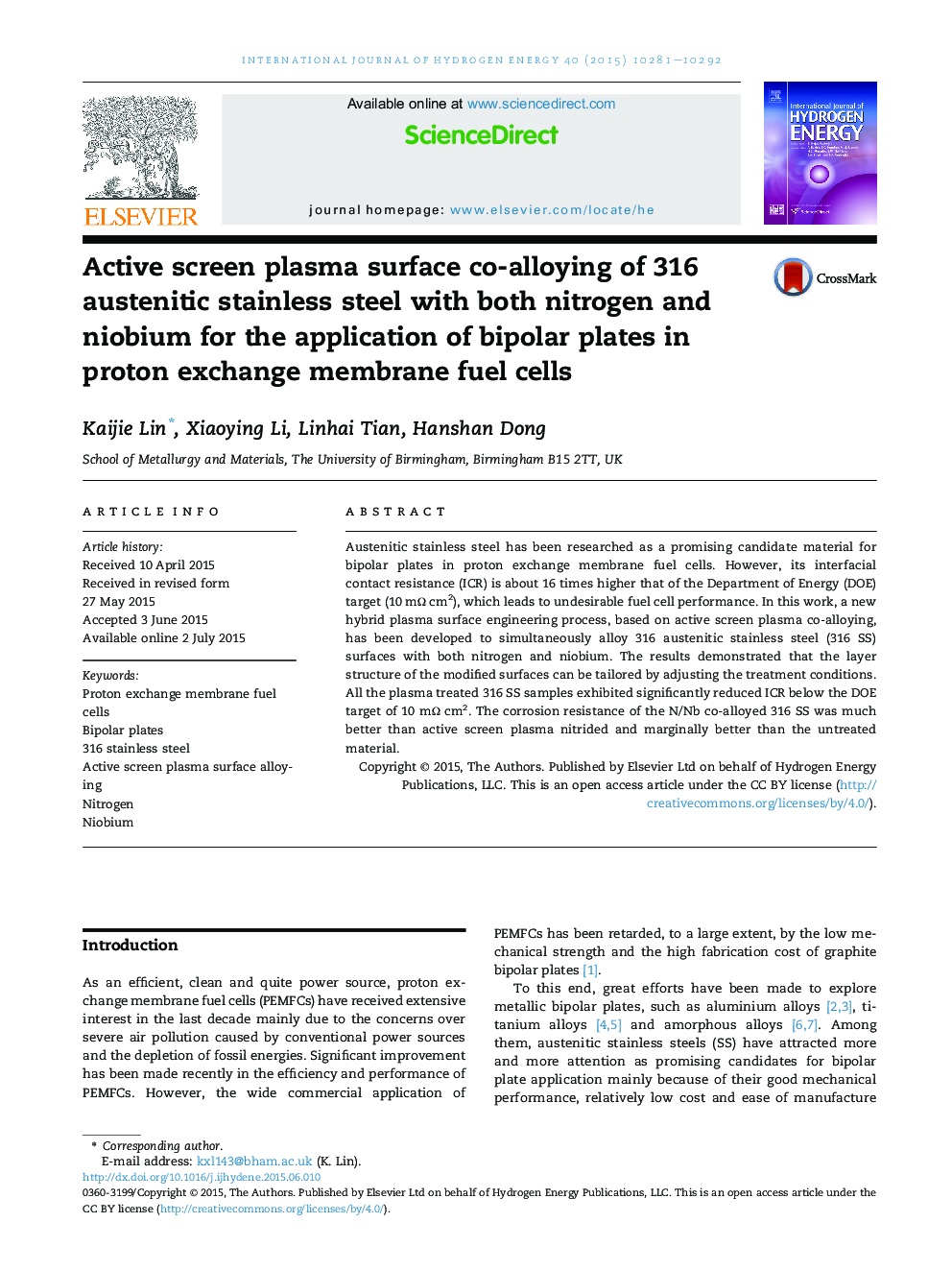| Article ID | Journal | Published Year | Pages | File Type |
|---|---|---|---|---|
| 7714887 | International Journal of Hydrogen Energy | 2015 | 12 Pages |
Abstract
Austenitic stainless steel has been researched as a promising candidate material for bipolar plates in proton exchange membrane fuel cells. However, its interfacial contact resistance (ICR) is about 16 times higher that of the Department of Energy (DOE) target (10 mΩ cm2), which leads to undesirable fuel cell performance. In this work, a new hybrid plasma surface engineering process, based on active screen plasma co-alloying, has been developed to simultaneously alloy 316 austenitic stainless steel (316 SS) surfaces with both nitrogen and niobium. The results demonstrated that the layer structure of the modified surfaces can be tailored by adjusting the treatment conditions. All the plasma treated 316 SS samples exhibited significantly reduced ICR below the DOE target of 10 mΩ cm2. The corrosion resistance of the N/Nb co-alloyed 316 SS was much better than active screen plasma nitrided and marginally better than the untreated material.
Related Topics
Physical Sciences and Engineering
Chemistry
Electrochemistry
Authors
Kaijie Lin, Xiaoying Li, Linhai Tian, Hanshan Dong,
